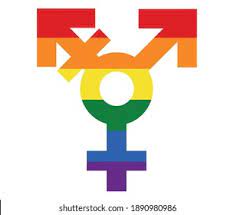Estrogen and progesterone are two of the most important hormones in the human body, particularly for individuals with a uterus. They play critical roles in reproduction, menstrual cycles, and overall health. But have you ever wondered where these hormones come from? This article will explore the various sources of estrogen and progesterone production, giving you a clearer picture of their powerhouse origins. So, buckle up for a journey through the fascinating world of hormone production!
What Are Estrogen and Progesterone, Anyway?
Estrogen and progesterone are steroid hormones that significantly influence the reproductive system. Estrogen is often dubbed the "female hormone," as it regulates the menstrual cycle, promotes the development of secondary sexual characteristics, and supports pregnancy. There are several types of estrogen, including estradiol, estrone, and estriol, each playing a unique role in the body. On the other hand, progesterone is essential for preparing the uterus for pregnancy and maintaining it if conception occurs. It also plays a part in regulating the menstrual cycle, acting as a counterbalance to estrogen’s effects.
These hormones don’t just hang around doing nothing; they actively engage in various bodily functions. For instance, estrogen helps maintain bone density, promotes cardiovascular health, and influences mood and cognitive function. Progesterone, meanwhile, has a soothing effect, often helping to calm anxiety and stabilize mood swings, especially during the luteal phase of the menstrual cycle. Together, they create a delicate hormonal balance that is crucial for reproductive health and overall well-being.
The Major Players: Ovaries and Their Role
When it comes to hormone production, the ovaries are the main event. These almond-shaped organs are responsible for producing most of the estrogen and progesterone in people with female reproductive systems. Each month, during the menstrual cycle, the ovaries release estrogen in the first half of the cycle (follicular phase) to prepare the body for ovulation. After ovulation occurs, the now-empty follicle transforms into a structure called the corpus luteum, which produces progesterone. This hormone ensures the uterus is ready for a potential pregnancy.
The hormonal output from the ovaries is not just a one-time deal; it fluctuates throughout the menstrual cycle. These fluctuations are crucial for regulating various stages, from menstruation to ovulation to pregnancy. However, ovarian health is vital for optimal hormone production. Factors such as age, diet, and lifestyle can impact ovarian function, leading to irregular cycles and hormonal imbalances.
The Adrenal Glands: Sneaky Hormone Producers
While the ovaries may steal the spotlight when it comes to estrogen and progesterone, the adrenal glands are also important players in hormone production. These small glands, located on top of the kidneys, produce various hormones, including cortisol and adrenaline. But what many people don’t realize is that they also produce a small amount of sex hormones, including estrogen and progesterone. When the ovaries slow down hormone production, particularly during menopause, the adrenal glands can step in to compensate.
However, the contribution from the adrenal glands is usually minimal compared to what the ovaries produce. As a result, if the adrenal glands are under stress or not functioning optimally, it can lead to further hormonal imbalances. So, while the adrenal glands might not be the primary source of sex hormones, they can play a significant role, especially in times of hormonal transition.
How Fat Cells Contribute to Hormone Production
Did you know that your body fat does more than just store energy? Fat cells, or adipocytes, also play a role in hormone production, particularly estrogen. This happens because fat cells contain an enzyme that converts androgens (male hormones) into estrogen. This process is especially important during menopause when ovarian hormone production declines. The body starts relying more on fat cells to produce estrogen, which can help mitigate some of the symptoms associated with menopause.
However, the relationship between body fat and hormone production is a double-edged sword. While a healthy amount of body fat can assist in maintaining hormonal balance, excessive fat can lead to higher estrogen levels, potentially causing issues like weight gain, irregular periods, and even an increased risk of certain cancers. Finding that sweet spot is essential for optimal hormonal health.
The Menstrual Cycle: A Hormonal Rollercoaster Ride
The menstrual cycle is a fascinating, dynamic process marked by a monthly hormonal rollercoaster ride. The cycle typically lasts around 28 days but can range from 21 to 35 days. It’s divided into several phases, with each phase characterized by changes in hormone levels. In the first half, estrogen levels rise, leading to the thickening of the uterine lining. This is when you might feel more energetic and in a better mood, thanks to the estrogen boost.
Then comes ovulation, when an egg is released, and progesterone takes the stage. This hormone prepares the uterus for a potential pregnancy, and if fertilization doesn’t occur, progesterone levels drop, leading to menstruation. The fluctuations in estrogen and progesterone throughout the cycle can affect everything from mood to energy levels to physical symptoms. Understanding this cycle can help individuals recognize their bodies better and manage any challenging symptoms that arise.
Pregnancy: Boosting Hormones for Two!
When pregnancy occurs, the body kicks hormone production into high gear, and the ovaries are joined by the placenta, which becomes a major source of estrogen and progesterone. These hormones are crucial for sustaining pregnancy, supporting fetal development, and preparing the body for childbirth. During the first trimester, the corpus luteum, which produces progesterone, continues to support the pregnancy until the placenta takes over.
Increased hormone levels can lead to various changes during pregnancy, including breast tenderness, mood swings, and changes in appetite. While this hormonal surge is essential for a healthy pregnancy, it can also cause discomfort. Understanding the role of estrogen and progesterone during pregnancy can help expecting individuals prepare for the changes and challenges that come with this incredible journey.
Hormonal Balance: Why It Matters for Your Health
Maintaining hormonal balance is crucial for overall health and well-being. Imbalances in estrogen and progesterone can lead to a host of problems, such as irregular periods, mood swings, weight gain, and even more severe conditions like endometriosis or polycystic ovary syndrome (PCOS). It’s essential to recognize the symptoms of hormonal imbalance so that you can seek help if needed.
Moreover, hormonal imbalances can also affect your mental health. Estrogen has a positive effect on mood, while progesterone helps stabilize it – so when levels are off, you might find yourself feeling more anxious or irritable. Keeping your hormones balanced isn’t just about reproductive health; it’s a key aspect of your overall wellness.
Lifestyle Tips to Support Estrogen and Progesterone
Supporting healthy estrogen and progesterone levels can often be achieved through lifestyle changes. A balanced diet rich in fruits, vegetables, healthy fats, and lean proteins can provide the nutrients necessary for hormone production. Foods that are high in phytoestrogens, such as flaxseeds and soy products, can also help modulate estrogen levels. Staying hydrated and minimizing processed foods can further promote hormonal health.
Exercise is another critical component. Regular physical activity can help regulate hormone levels and reduce stress, which has a positive effect on the adrenal glands. Additionally, managing stress through practices like mindfulness, yoga, or meditation can lower cortisol levels, allowing for better hormonal balance. Making these lifestyle adjustments can significantly impact your estrogen and progesterone levels and, ultimately, your overall health.
Understanding what produces estrogen and progesterone helps demystify the hormonal processes that occur in our bodies. From the ovaries to the adrenal glands and even fat cells, various players contribute to hormone production. Recognizing how these hormones interact throughout life phases like the menstrual cycle and pregnancy can empower you to take charge of your hormonal health. By adopting healthy lifestyle practices, you can support your body’s natural hormone production and promote overall well-being. So, here’s to living your best hormonal life!

